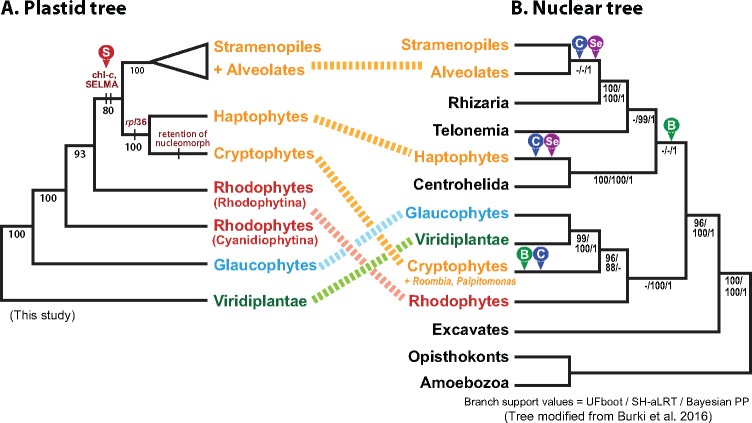Fig. 4.
—Secondary endosymbiotic origin of red alga-derived plastids and the nuclear multigene tree of eukaryotes. (A) The plastid-genome based tree of algae with the red arrow (marked with “S”) showing the putative single origin of the red alga-derived plastid in chlorophyll-c containing algae. (B) The nuclear multigene tree of life showing the putative relationships of chlorophyll-c containing algae in the context of nonphotosynthetic lineages. A possible explanation for the conflict in topology between the plastid and nuclear gene trees is that there were multiple independent red algal secondary endosymbioses in the photosynthetic lineages (either two events [marked with “B” and green arrows] or three events [marked with “C” and blue arrows]). A more likely scenario is that there was a single red algal secondary endosymbiosis (perhaps in the cryptophyte ancestor), followed by serial eukaryotic endosymbioses involving chlorophyll-c lineages that spread the plastid to other groups (marked with “Se” and magenta arrows).

